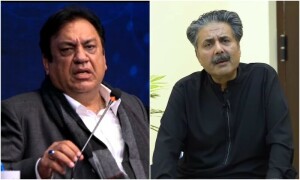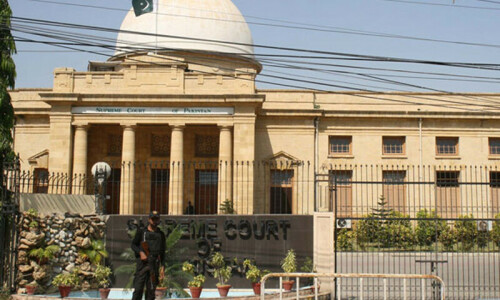ONE thing that the departure of the first cargo under CPEC has established is that a western route to Gwadar port does indeed exist, and the port is indeed operational. To demonstrate that point, the convoy was deliberately brought down to the port from the western route, crossing the Indus at the new bridge at Khushalgarh, down to DI Khan and Zhob and onward to Quetta. There was a lot of talk in days past about the western route being neglected, and resources meant for Gwadar port having been spent in Karachi instead. It is not clear what grounds gave rise to such talk, but the fact that some of it echoed inside parliament gave it a significance it would not otherwise have had. We now have an actual demonstration of the existence of a western route, as well as the functionality of the port in question, so perhaps the time has come for the critics to be more specific about what exactly their grievances are.
Some critics might argue that the western route was supposed to run through Khuzdar to DG Khan, and onward to the Karnal Sher Khan interchange in Swabi district of the Peshawar-Islamabad motorway. From there it was supposed to travel through Swat and link up with the Karakoram Highway. That route, according to a map of the National Highway Network, would cut almost 350km of travelling distance compared to the route through the motorway. There was another route, running from DI Khan to Peshawar, that has also yet to be built. Work on the Swat Motorway kicked off in August of this year.
People can be excused for becoming a bit dizzy when reading the details of all these routes. It can become difficult to keep track of what is being talked about. Given how vituperative the rhetoric surrounding the issue can become, it is difficult to believe that the whole controversy is simply about ensuring that the benefits of future CPEC flows should be shared equitably. Raising the spectre of Kalabagh dam, or worse still, the dismemberment of the country as some have done, over some stretches of road is so far over the top that it certainly inspires questions as to where such animus is coming from, especially given the fact that much work is indeed being carried out. A conversation is definitely needed around the benefits that will flow from CPEC in the future, and who they will be shared with. But that conversation needs far more focus on the specifics of the projects than is currently the case. There are several dimensions to CPEC projects: the road network, the power projects, the assorted industrial zones, language teaching centres and other paraphernalia for the promotion of connectivity. All of these deserve attention, not just the stretches of roads being built.
Published in Dawn, November 17th, 2016










































